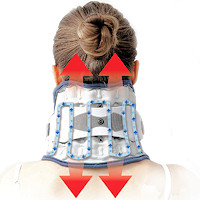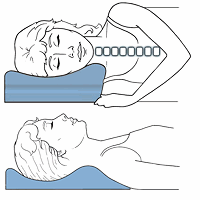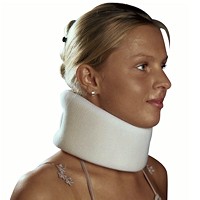Neck Issues
Most people will suffer some neck issues in their lifetime. The neck or cervical spine is an amazing structure. Through a series of seven bones called vertebrae, it starts at the base of the skull in the back of the head and attaches to the upper back.
A giraffe’s neck can be 6 feet long, but has exactly the same number of bones as a human! The neck alone can weigh 600 pounds!

The very first vertebra or neck bone in called the Atlas and attaches to the skull. It gets it’s name from the Greek mythological figures burdened with “carrying the world on top of his shoulders”. This is similar to how the neck carries the weight of the head.

The weight of the head is about 12 pounds give or take, about the weight of a bowling ball. And while not the weight of a planet, the neck does shoulder a big load. It not only supports the head, the amazing anatomy permits the head’s incredible amount mobility, including rotation, forward and backward, as well a side bending.
The vertebral bones in the neck additionally provide a pathway for arteries to allow proper blood flow to the brain. The neck also protects the important spinal cord and provides protection for nerves that supply the head, shoulders and arms.
The neck is built for mobility and, for the most part, does a great job. Lack of mobility is often a sign that neck issues may occur. However, the cervical spine vertebrae are generally durable and resistant to injury.
Most neck issues are the result of wear and tear rather than injury like whiplash, however, suffering a neck injury can only makes the difficulties worse. Wear and tear often leads to arthritis or degenerative disc disease. This can be a consequence of injury or most likely, lack of mobility due to postural problems and poor ergonomics.
 Neck Traction Devices Neck Traction Devices |
 Cervical Pillows Cervical Pillows |
 Neck Support Collars Neck Support Collars |
The weight of the head can have a negative effect on the neck if not properly aligned, placing undue stress on structures not meant for support, thus affecting the structures designed for mobility. This is often seen with head forward posture and consistent downward posture associated with today’s use of phones and computers.
This causes less room for blood and nerve flow, as well as strain on muscles responsible for active motion. In extreme cases due to neck problems, often associated with disease, the neck can not hold up the head, a condition known as drop head syndrome.
In general, understanding the importance of the cervical spine and what an amazing structure it is, we might take better care of it, giving it all the help it needs to be able to function properly. That is the type of solutions we try to provide, covering many ranges of neck issues.
Can we undo what has already been done? Sometimes yes and sometimes no, however, we can try to stop issues from worsening and gain relief by improving function and easing restrictions whenever possible. With today’s busy society, it’s not easy, but devoting some time every day focusing on the neck can make a difference.
A 2023 study in iScience showed that even in young adults suffering chronic neck pain, conventional exercise interventions can improve their level of pain, anxiety state, neck disability, as well as work efficiency.

